During the COVID-19 pandemic, 25 public buses were retrofitted into dedicated COVID-19 patient transport vehicles, known as COMET MAXI.
The COMET MAXI project started off as a collaboration between SMRT Corporation, HOPE Technik and Sheares Healthcare, with the support of Temasek Foundation. Buses were used to facilitate the mass transfer of COVID-19 patients between facilities, such as hospitals, dormitories and various community facilities. SBS Transit later contributed buses to the COMET MAXI fleet.
Public buses which were retrofitted into COMET MAXI buses are:
- SMRT Buses MAN A22 (Euro V) – 20 units
Retrofitted in May 2020; commenced service in June 2020; re-registered as private buses - SBS Transit Scania K230UB – 5 units
Retrofitted in June 2020; commenced service in July 2020; not re-registered as private buses
Apart from public buses, private coaches later joined the COMET MAXI fleet. See the COMET article for more details.
As of 2021, the Sheares Healthcare-owned MAN A22 buses were sold to private bus operators. The SBS Transit Scania K230UB buses had their modifications reverted, and later returned to revenue service in August 2021.
Project History
Information regarding the collaboration was first shared on 25 April 2020, in a Facebook post by Temasek Holdings’ Chief Executive, Ho Ching, who then referred to buses as COVID-19 Bus Transporters. Initial photos show an SMRT MAN A22 undergoing conversion works, and the post mentioned that up to 50 buses would similarly be converted (comprising 20 buses in the first batch, and 30 buses in a later batch). Converted buses are also re-registered as private buses.
More updates came on 29 April 2020 in the form of edits to the original Facebook post, including the revised name COMET MAXI, which stood for COVID-19 Multi-Passenger Enhanced Transporter. The “MAXI” differentiates these buses from other smaller passenger vehicles that were also retrofitted for patient transport, such as the COMET MIDI and COMET MINI.
On 12 May 2020, a joint statement was issued by SMRT Corporation and partners Temasek Foundation, HOPE Technik and Sheares Healthcare, describing the features and operational details regarding the COMET MAXI fleet. These press materials stated that the buses began operations on 6 May 2020.
In June & July 2020, the COMET MAXI fleet was joined by retrofitted Scania K230UB public buses from SBS Transit. Similar privacy stickers, airtight driver cabin compartment divider, as well as a Negative Pressure System, were installed in these buses. A single Isuzu LT434P coach was contributed by Leisure Frontier, which will not be discussed in this article.
Stakeholders
The COMET MAXI was the product of a collaboration between SMRT Corporation, HOPE Technik and Sheares Healthcare, with the support of Temasek Foundation.
TRIGEN Automotive, the special function vehicle division of HOPE Technik, designed and engineered COMET MAXI’s features. HOPE Technik is a home-grown engineering firm with expertise in mechanical, electrical & electronics, and software engineering since 2006. Conversion works are undertaken by Liannex Corporation.
SMRT subsidiary Strides Transportation, a local limousine and premium bus service provider, oversees the operations, driver training and maintenance of the COMET MAXI fleet. Sheares Healthcare, which invests in and provides healthcare delivery services in Asia, owns the fleet of COMET MAXIs and liaises with the Ministry of Health to complement its patient transport services.
Public transport operator SBS Transit contributed buses for retrofitting and retained ownership of these buses, despite carrying the COMET MAXI branding.
COMET MAXI Features
Exterior – MAN A22 & Scania K230UB
Prior to conversion works, MAN A22 buses were either painted in SMRT Buses’ Beige livery (18 buses); SMRT Buses’ Pixel Livery (SMB203S only); or LTA’s Lush Green livery (SMB208D only).
While converted buses entered COMET MAXI service in original liveries (with SMRT and SG♡Bus logos removed from the exterior of the vehicle), a small handful were repainted to a Silver livery, reminiscent of the silver base coat that formed SMRT Buses’ ‘pixel’ corporate livery launched in 2013. It later emerged that the Silver livery was a base coat for the final COMET MAXI livery (unveiled at a press event on 12 May 2020), which featured promotional decals on top of the silver base livery previously identified.
As for the Scania K230UB buses, they originally bore the SBS Transit’s corporate livery in purple, red and white. They were vinyl-wrapped with the COMET MAXI livery in a white base coat, as opposed to the more tedious and expensive process of repainting (as was done for the MAN A22 buses).
White perforated vinyl stickers are affixed to the retrofitted MAN A22 & Scania K230UB side and rear windows, similar to that used on bus advertising stickers, and are likely intended as privacy screens. The passenger compartment is almost completely enclosed by these stickers.
The Negative Pressure System exhaust vent is also visible from the exterior. This device replaces one of the right-side passenger windows of the bus.
Interior – Passenger Compartment
Significant retrofitting work was performed on the interior to make them suitable for the transport of COVID-19 patients. According to TRIGEN Automotive, each bus took two to three days to retrofit.
As part of the modifications, an airtight floor-to-ceiling partition separates the rear passenger compartment from the front section of the bus. The dividing wall features viewing windows and an emergency door for cross-compartment passage. The door frame is also fitted with a rubber gasket for air sealing.
The passenger cabin is equipped with a Negative Pressure System with a HEPA filter, which ensures that only clean air is filtered out from the passengers’ compartment. This device is installed on the right side of the bus in place of a window (near the exit door) and protruding into the bus cabin.
On the MAN A22, two seats were removed to accommodate the system. For the Scania K230UB, no seats had to be removed.
Each compartment is fitted with its own independent air-conditioning system, which prevents air circulation between both cabins.
Only the Scania K230UB had an intercom system installed, which allows communication between bus compartments.
Interior –Front Compartment (MAN A22)
The bulk of the modifications are located in the front compartment. Apart from the drivers’ cab, the front compartment retains two wheel arch seats for the transport of accompanying medical or administrative personnel.
As COMET MAXI buses are no longer deployed on revenue service, all revenue service equipment was removed from the buses, such as the New Onboard Bus Equipment (Bus fare console, card readers, bus location system), Trapeze Common Fleet Management System, and the CCTV system. Some buses also had their CCTV monitor screen removed, as was the case for this bus photographed (PC9089E).
The first of many modifications is a differential pressure gauge, located on the right side of the driver, that monitors the difference in pressure between the front and rear cabins. Due to the negative pressure system, the rear cabin is always kept at a lower pressure, of which the pressure difference is observed to be >30 Pa during normal operation.
Other modifications have been made for driver comfort, particularly because the isolation of both cabins’ air-conditioning systems resulted in degraded air-conditioning performance in the front cabin.
An independent air-conditioning system for the front cabin is installed above the left wheelarch seat. An additional roof-mounted aircon duct near the front door directs the cold air to the driver.
In addition, a driver fan was installed on all buses in two different locations. Some buses have it installed above the driver’s seat, while others have it beside the dashboard. This fan is activated by a switch added to the dashboard.
Finally, an additional air-conditioning blower is installed near the front dashboard, effectively acting as a second air-conditioning unit for the front cabin. This aircon unit is understood to be intended for a Toyota Hiace van, and the controls are located beside the aircon unit.
In accordance with regulations for privately-registered buses, the driver seat was also replaced with one that has a seat belt.
Interior – Front Compartment (Scania K230UB)
Modifications to Scania K230UB buses were similar to those installed on the MAN A22s, such as:
- Differential pressure gauge beside drivers’ seat
- Two air-conditioning blowers – both located on the front dashboard
In addition, the Scania K230UBs have an intercom system that allows the driver to speak with passengers in the rear cabin.
Active Deployment (2020)
The COMET MAXI fleet of buses is used to facilitate the mass transfer of passengers between facilities, including hospitals, dormitories and various community facilities. MAN A22 buses were deployed starting from 6 May 2020, according to the press release. SBS Transit buses were deployed starting from 3 July 2020.
Driver matters

COMET MAXI drivers are not drawn from SMRT’s pool of bus drivers, but are specifically recruited for the job and must have a Class 4 drivers licence.
Prior to deployment, COMET MAXI drivers undergo 20 hours of training conducted by SMRT, including familiarisation with operating the vehicles’ retrofitted safety features. An additional two hours of training was conducted by the Singapore Civil Defence Force on the proper use of personal protective equipment (medical gown, gloves, and N95 mask) which drivers are required to put on while on duty.
Drivers do not come into contact with passengers, and vehicles are decontaminated after each deployment.
End of Operations
COMET operations were scaled down massively sometime around August/September 2020 with the decline of COVID-19 cases in workers’ dormitories. Disused MAN A22 COMET buses were spotted in various parking locations around Singapore, while SBS Transit parked its COMET buses at a corner of Ulu Pandan Bus Depot.
Active Deployment (2021)
In 2021, all MAN A22 COMET buses were sold off to private bus operators. Some of these buses were re-registered with new registration numbers and received further modifications under their new owners. These changes are detailed in a separate article:
As for the SBS Transit Scania K230UB buses, the modifications were reverted and the buses returned to revenue service in August 2021.
Retrofitted Buses List
For MAN A22 buses that underwent COMET MAXI conversion in mid-200, their road tax was first suspended and reflected as Non-User Lay-Up status whilst awaiting or undergoing modification works.
In addition, the MAN A22 COMET MAXI buses were re-registered as Private Buses, bearing the Private Bus registration prefix of PC. This enables buses to be operated by Class 4 driving license holders, without requiring an Omnibus Driver Vocational Licence (ODVL). All buses were progressively repainted to the COMET MAXI livery, featuring a silver base coat with COMET MAXI identifying decals.
SBS Transit’s COMET MAXI-converted Scania K230UB buses retained their original registration numbers.
| Public Buses converted to COMET MAXI (COVID-19 Multi-Passenger Enhanced Transporter) |
|
| SMRT Buses (MAN A22) |
|
| Former Registration (Public Bus) | New Registration (Private Bus) |
| SMB196D | PC8932C |
| SMB197B | PC9034M |
| SMB198Z | PC8997R |
| SMB200A | PC9271U |
| SMB201Y | PC9089E |
| SMB202U | PC9264R |
| SMB203S | PC9064B |
| SMB204P | PC9098D |
| SMB205L | PC8948H |
| SMB206J | PC9174S |
| SMB207G | PC8941B |
| SMB208D | PC9043L |
| SMB209B | PC9054E |
| SMB210X | PC9173U |
| SMB212R | PC9255S |
| SMB214K | PC9040U |
| SMB215H | PC9263T |
| SMB217C | PC8976B |
| SMB218A | PC9078L |
| SMB219Y | PC8969Y |
| SBS Transit (Scania K230UB) |
|
| Registration (Public Bus) | |
| SBS8702G, SBS8856X, SBS8927A, SBS8939R & SBS8941H | |
The SMRT MAN A22 buses first entered revenue service in late 2011, while the converted SBS Transit Scania K230UB (Euro V) buses were first registered in July 2009.
In 2021, the former COMET MAXI MAN A22 buses were sold off to private bus operators. As for the SBS Transit Scania K230UB buses, the modifications were reverted and the buses returned to revenue service in August 2021.
Gallery: (MAN A22)
SMRT Beige Livery
Out of 20 MAN A22 buses, 18 of them first bore the SMRT Beige livery prior to COMET MAXI repainting.
Lush Green Livery
SMB208D was the only MAN A22 bus to bear the Lush Green livery prior to repainting.
Silver Base Livery
Interim livery prior to affixing of COMET MAXI decals.
COMET MAXI Livery
Final livery for all COMET MAXI MAN A22 buses.
The ‘COMET MAXI’ logo is a gold heart that represents unity during the COVID-19 period and the desire to support the needs of the community during challenging times. The three COMET values are Care, Safety and Resilience.
Online circulated images
Exterior photograph is taken at the lobby of HOPE Technik in Penjuru.
Old corporate logos (i.e. SMRT) were removed from the exterior of the vehicle. Perforated vinyl stickers were affixed to the bus’ side and rear windows, similar to that used on bus advertising stickers, and are likely intended as privacy screens.
Gallery: (Scania K230UB)
View this post on Instagram
Pre-modification:
COMET MAXI Specifications at a glance
| MAN A22 | Scania K230UB | |
| Registration no. | PC8932C; PC8941B; PC8948H; PC8969Y; PC8976B; PC8997R; PC9034M; PC9040U; PC9043L; PC9054E; PC9064B; PC9078L; PC9089E; PC9098D; PC9173U; PC9174S; PC9255S; PC9263T; PC9264R; PC9271U | SBS8702G; SBS8856X; SBS8927A; SBS8939R; SBS8941H |
| Quantity | 20 buses | 5 buses |
| Owner / operator (2020-2021) | Owned by Sheares Healthcare; operated by Strides Transportation |
SBS Transit |
| Registration date | April-May 2020 (Originally registered to SMRT Buses in late 2011) |
2009 (no change) |
| Technical Specifications | ||
| Bus Model | MAN NL323F (A22) | Scania K230UB |
| Engine | MAN D2066 LUH-32 engine | Scania DC9 35 230 engine |
| Emission Standard | Euro V compliant via EGR / MAN PM-Kat® | Euro V compliant via EGR |
| Transmission | ZF EcoLife 6 AP 2000 B (6-speed) | ZF Ecomat 6HP 504C (6-speed) |
| Bodywork | MAN Lion’s City Hybrid (Built under license by Gemilang Coachworks) | Gemilang Coachworks |
| EDS | Mobitec MobiLED (not in use) | Hanover (not in use) |
| Air conditioning | Independent air conditioning systems in both cabins Unknown (front cabin); Denso LD8u (rear cabin) |
|
| Doors | Masats | SMC Transit |
| Seating capacity | Front cabin: 1 driver & 2 seated passengers Rear cabin: 34 passengers & 1 wheelchair (excluding foldable seats) |
Front cabin: 1 driver & 2 seated passengers Rear cabin: 32 passengers & 1 wheelchair (excluding foldable seats) |
| COMET MAXI Modifications | ||
| Retrofit company | TRIGEN Automotive (a division of HOPE Technik) and Liannex Corporation | |
| Specifications (at launch) | Removal of all revenue service equipment and CCTV system Front/rear cabin partition with emergency door Rear cabin Negative Pressure System with HEPA filter Perforated vinyl stickers as window privacy screens Driver’s seat replaced with seatbelt-fitted version Hand sanitisers around bus compartment |
|
| Specifications (added later) | Driver-facing air-conditioning blower (from a Toyota Hiace) Driver-facing fan (MAN A22 only; some buses mounted behind the driver, other buses mounted next to the coinbox) Additional aircon duct for bus driver on left side roof (MAN A22 only) Intercom system between front and rear cabin (Scania K230UB only) |
|
| Livery | SMRT beige/red livery LTA’s Lush Green livery Silver base livery COMET MAXI livery – featuring gold, black and red decals on repainted Silver base coat |
COMET MAXI livery – stickered full-body wrap featuring gold, red and purple decals on White background |
Continued on Page 2 – Gallery
- Other Conversions
- Article edit history
- Gallery
- External Links & References
Pages: 1 2

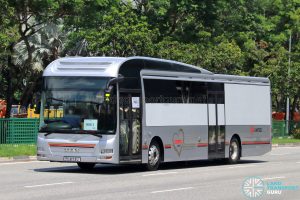


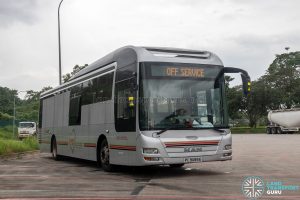
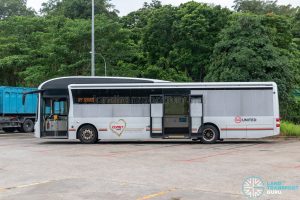
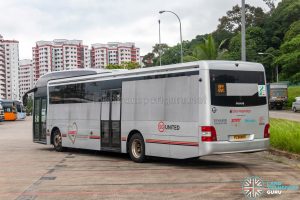
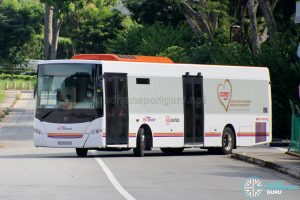
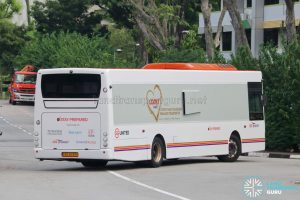
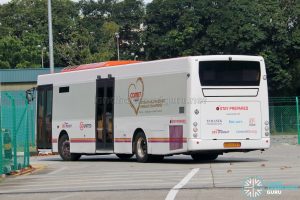
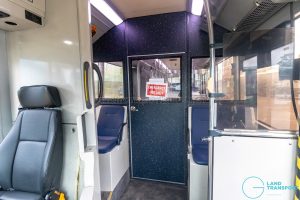
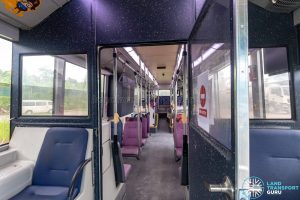
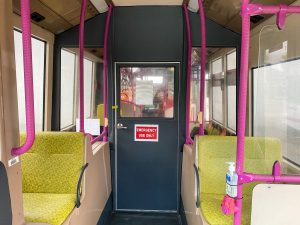
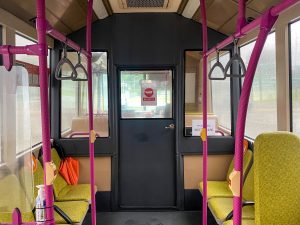
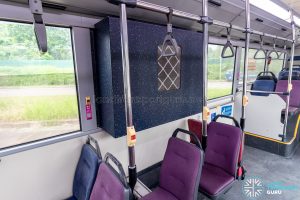
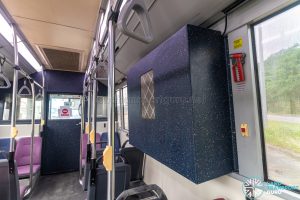

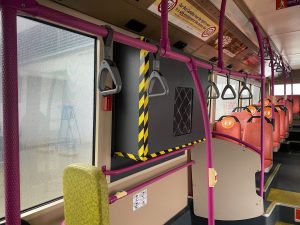
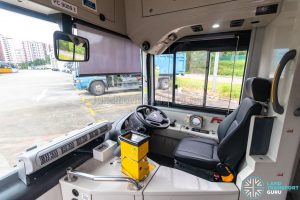
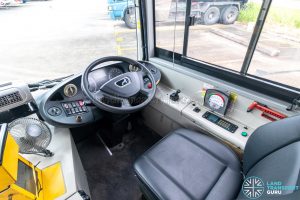
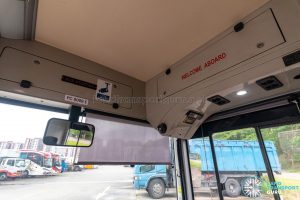
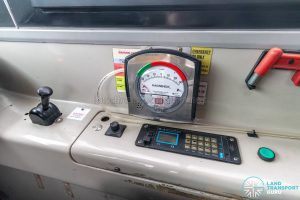
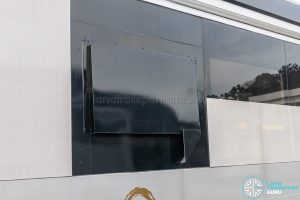
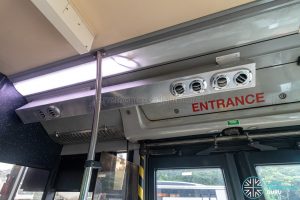
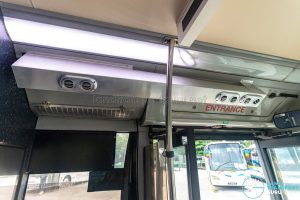
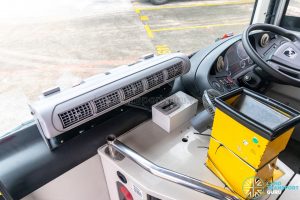
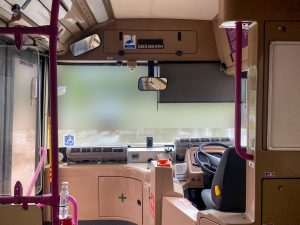
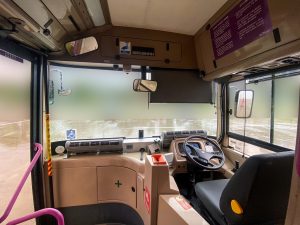
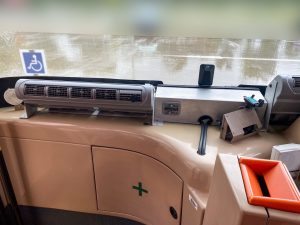

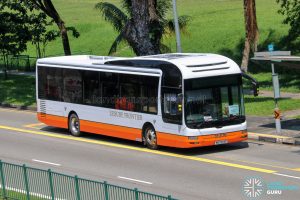


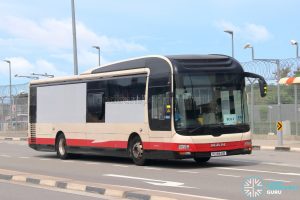
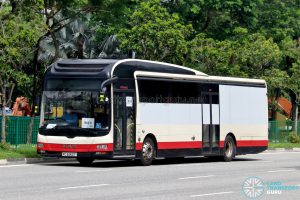
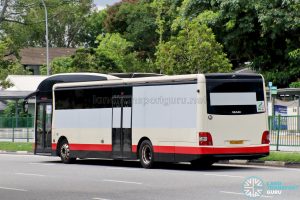
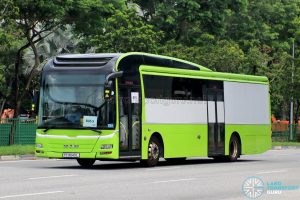
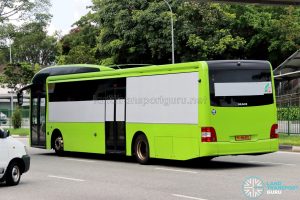
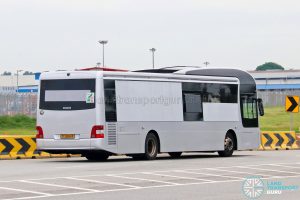
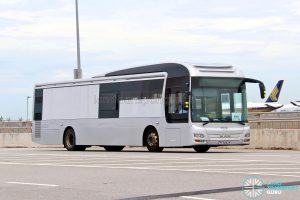
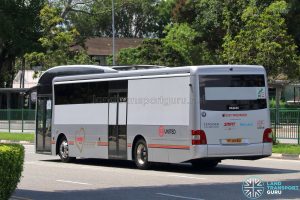
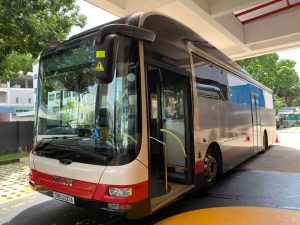


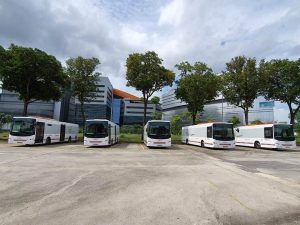
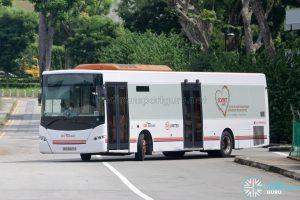
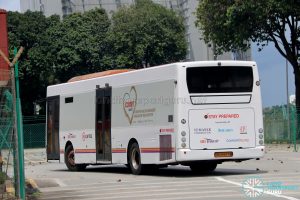
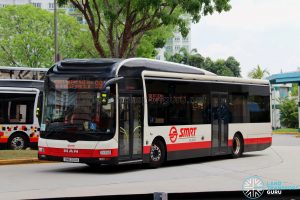
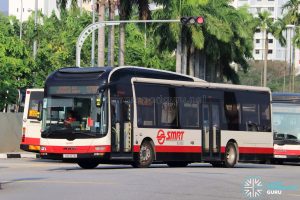
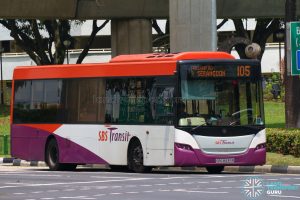

Contact information for covid-19 patients bus transporter. As been calling smrt..phone enquiry passing around…getting nowhere.
50 A22 Euro V can easily be replaced with 50 A22 Euro VI
With this guess the some storage batch of new Man A22 euro 6 buses will be given to SMRT to cover the short fall.
This might explain why so many Euro 6 A22s have been registered recently.
That’s not good… those voith euro 6s do not perform as well as those goodness departing the fleet.
They should have used those bearly used TF50 citaros seating at Lor1 instead.
Only allowed to use SMRT assets. Buses funded by LTA not allowed to be used.
Actually why they don’t want to just procure additional ambulance? Because ambulance now in high demand, so can only convert public buses to use as healthcare transport vehicle. What a good way to adapt to the changing situation.
These buses will probably no longer be used for public transport services ever again, but instead used for healthcare transport services from now on. I guess one.
After the pandemic, the buses would probably return back to passenger service after having its revenue equipment re-installed and some repairs done. Probably also may be repainted to the green livery.
Most importantly, they need to disinfect the buses thoroughly before they put the buses back on public transport services after this Coronavirus is over.
It would be toouch hassle to remove the mods and disinfect the vehicles.
Also, it is interesting to note that no vocational licence is needed to drive these buses, only Class IV is enough. Are Covid-19 patients treated as general cargo now?
Bro, class IV are for buses. General cargo are class V la dey…